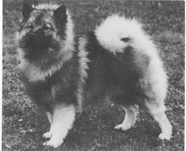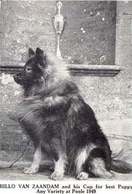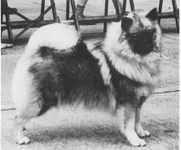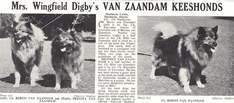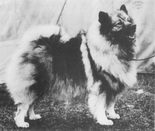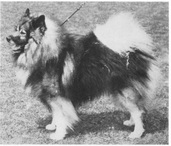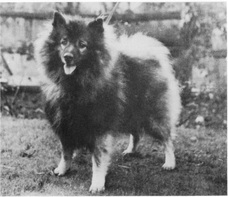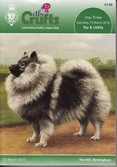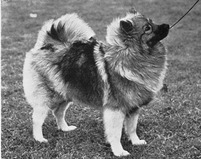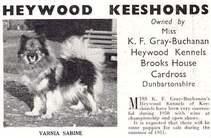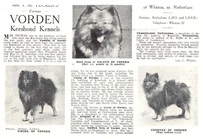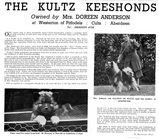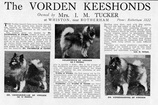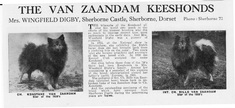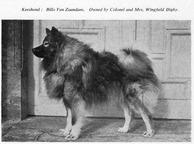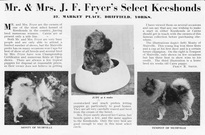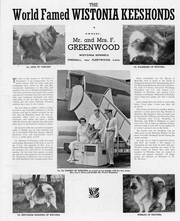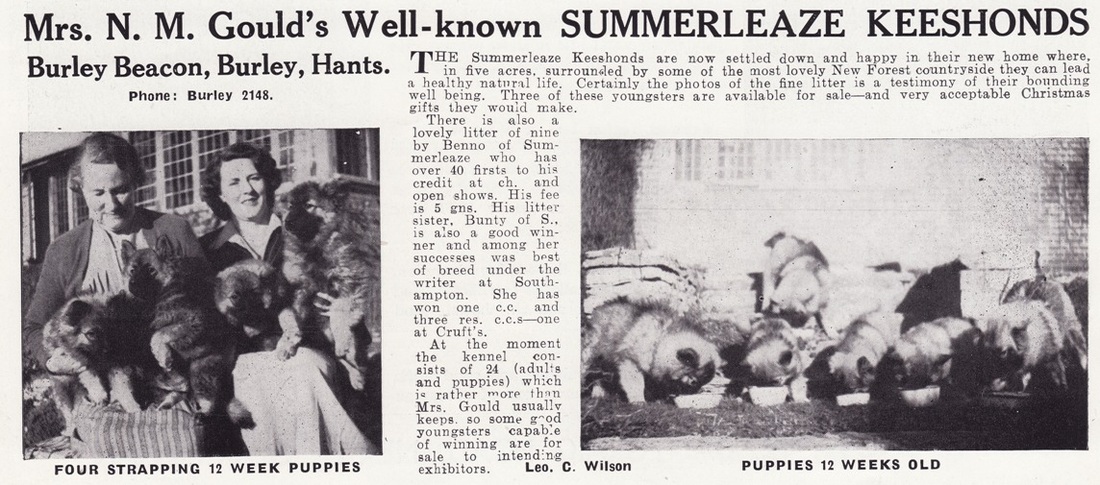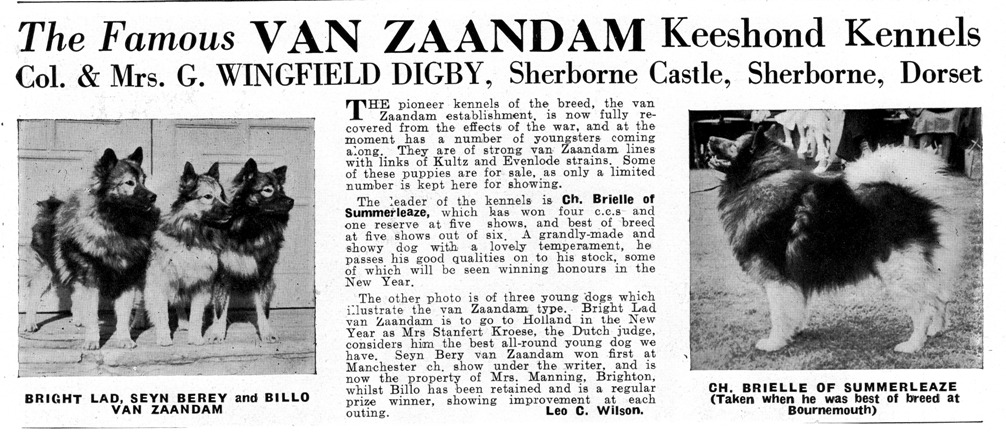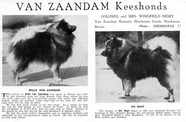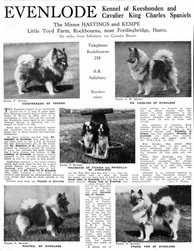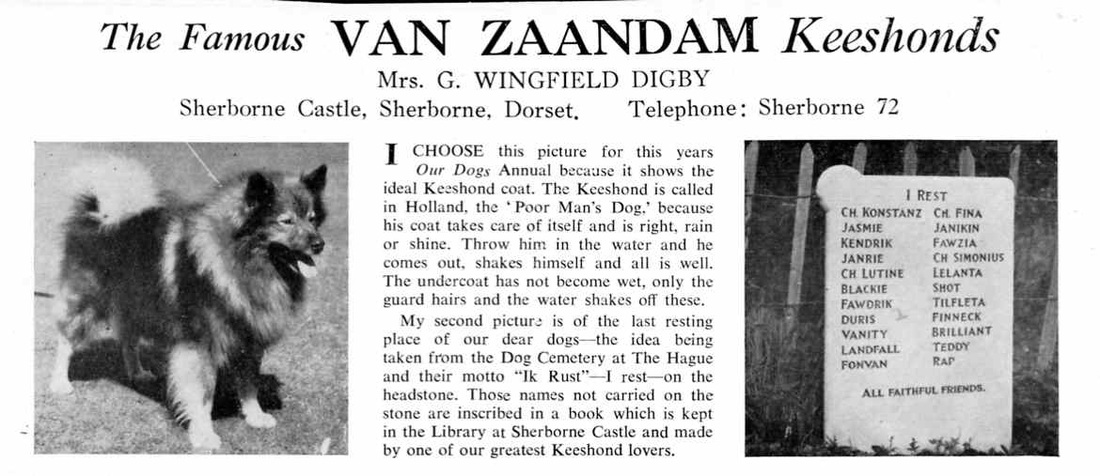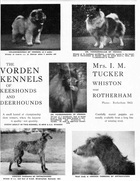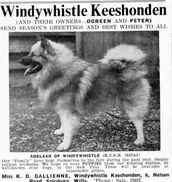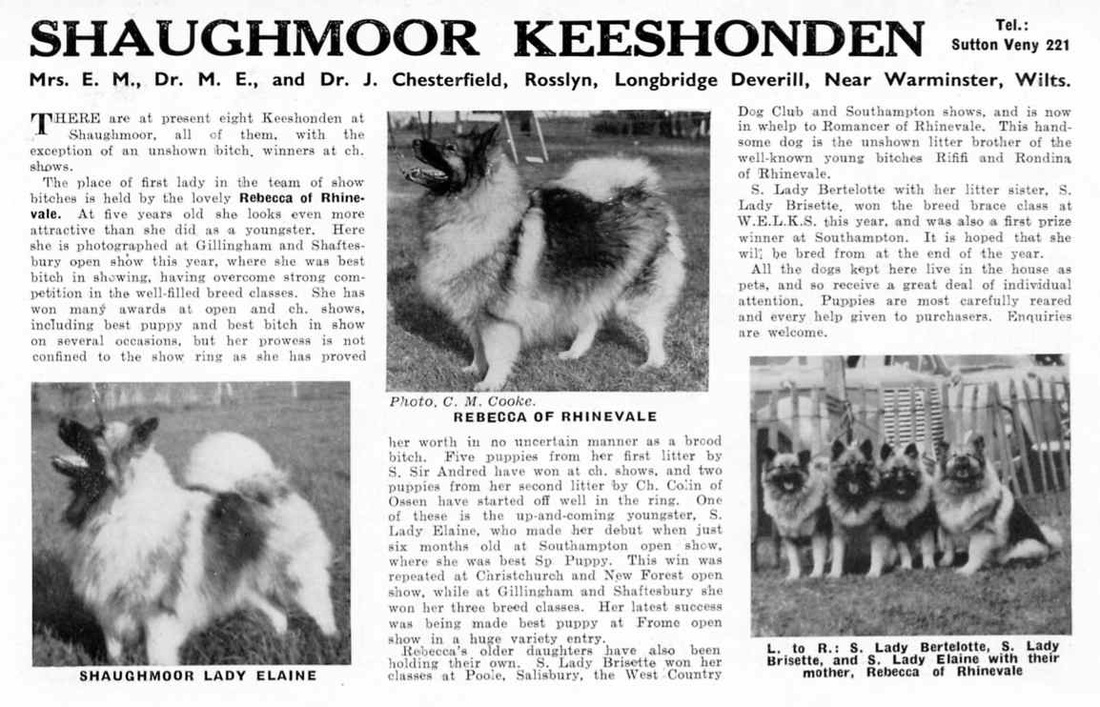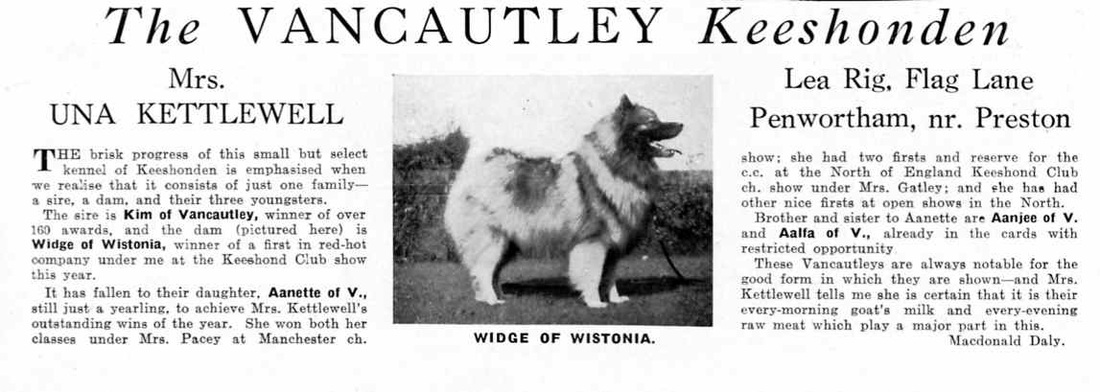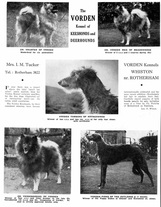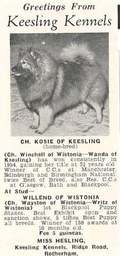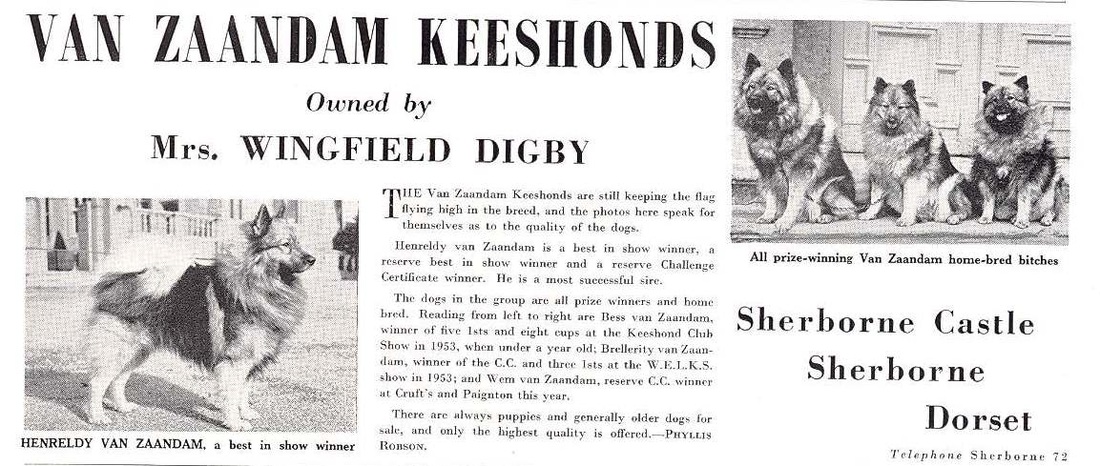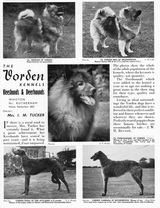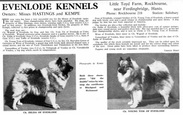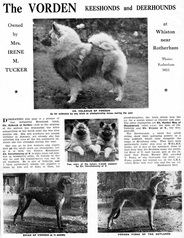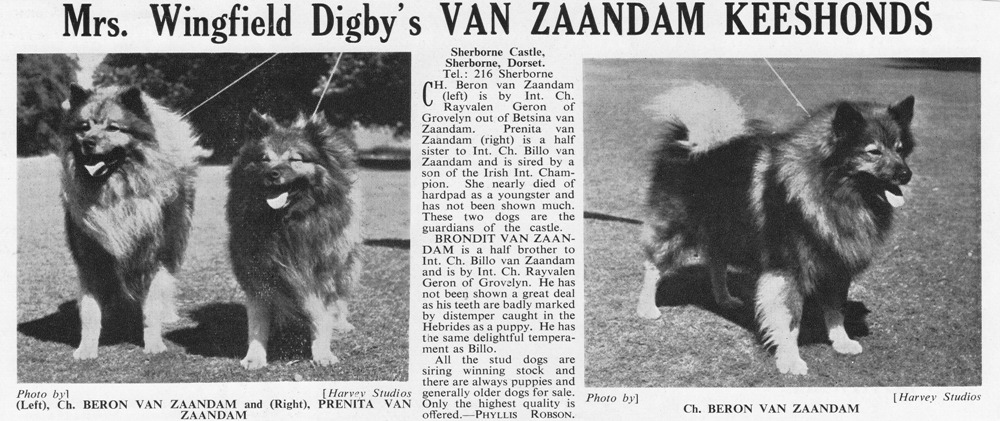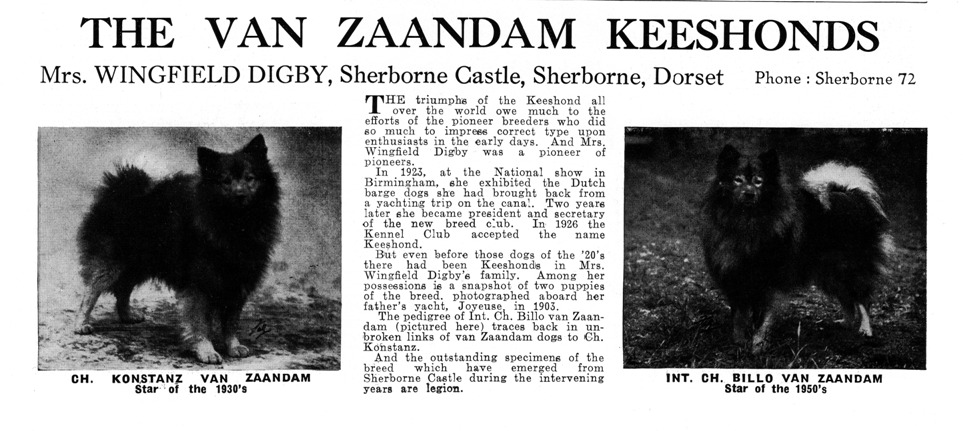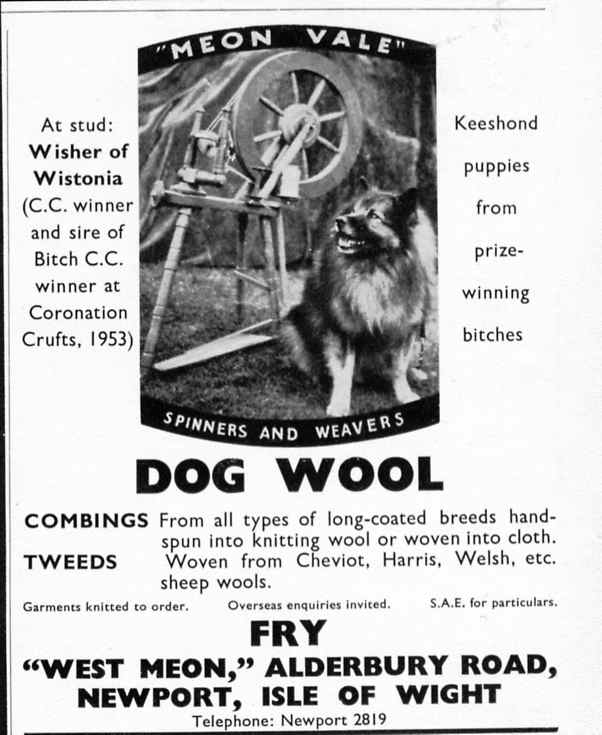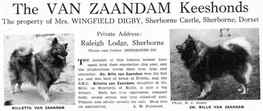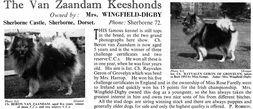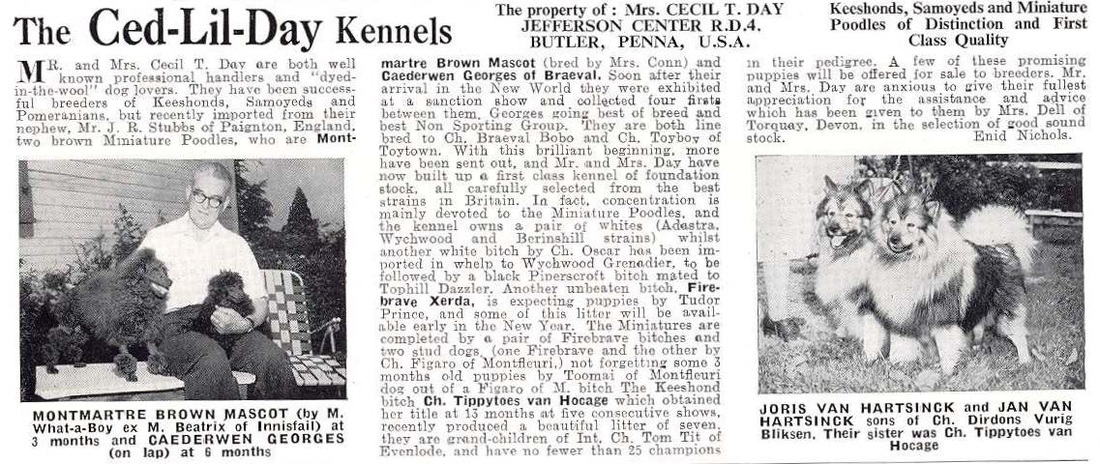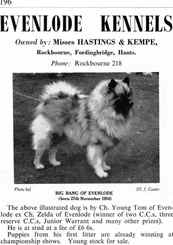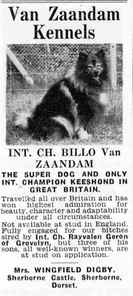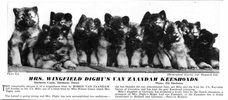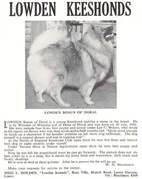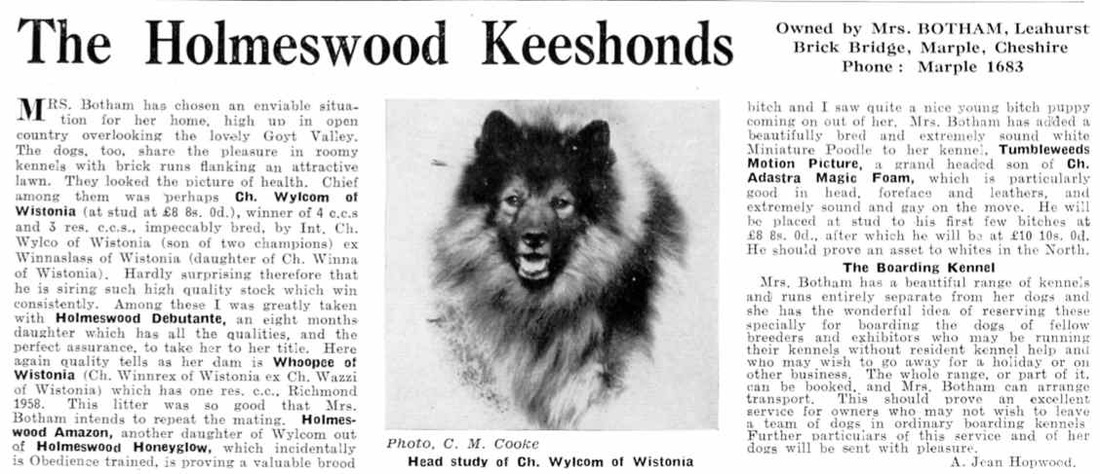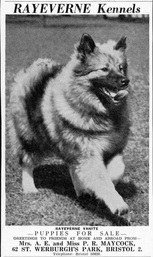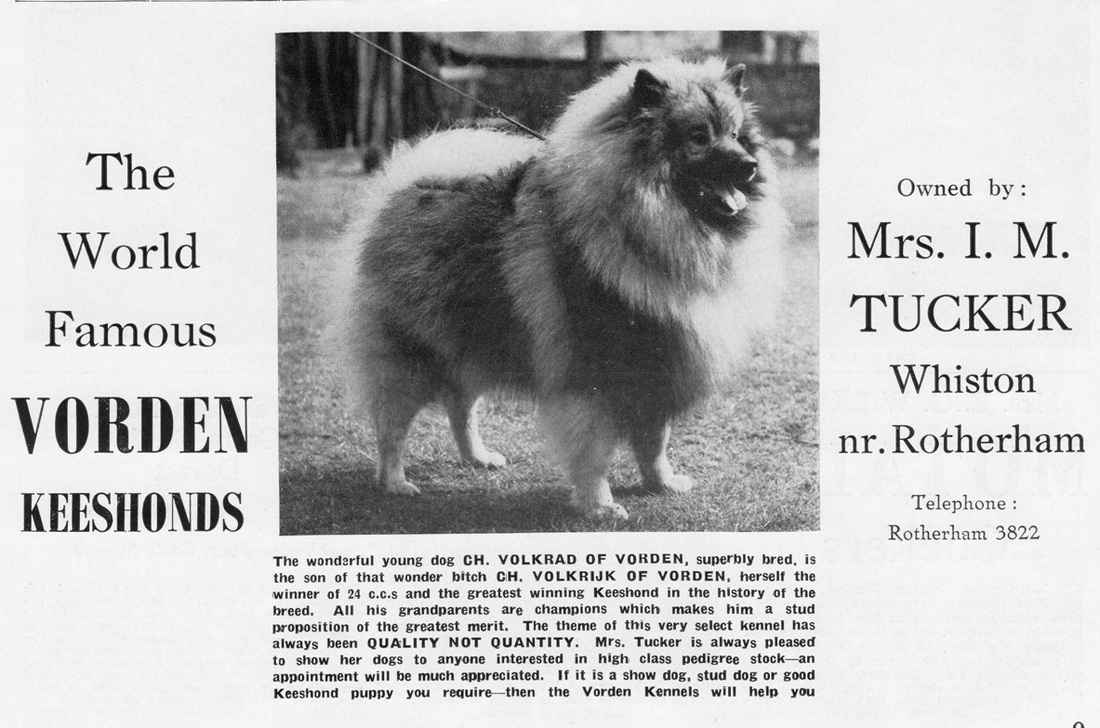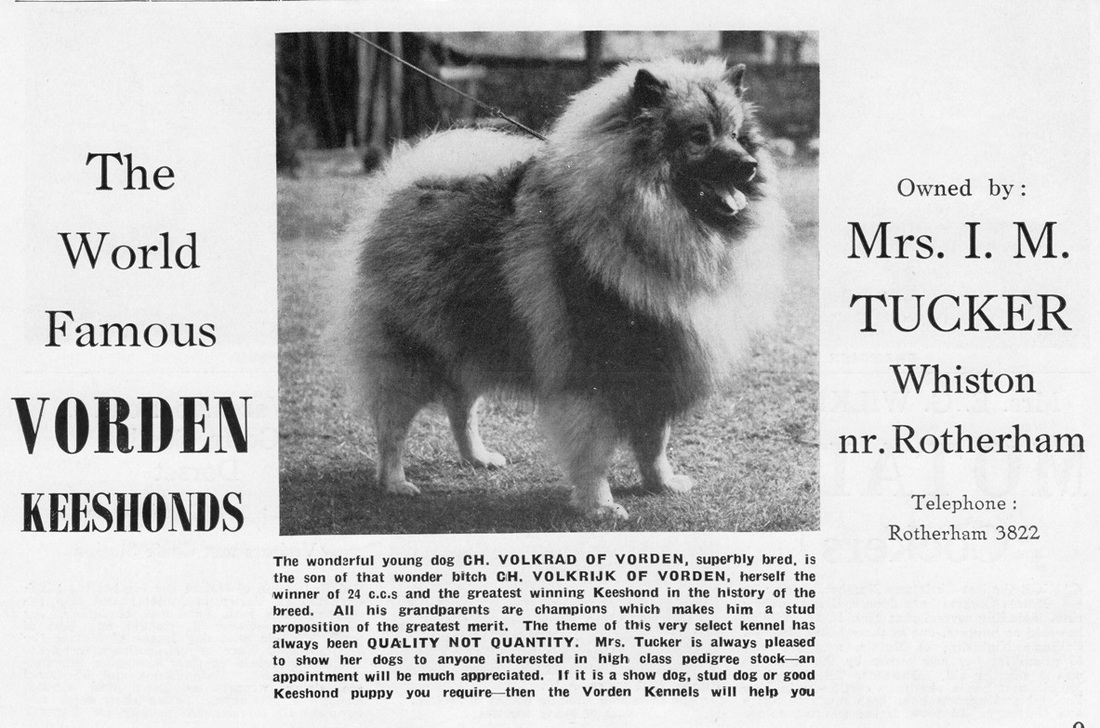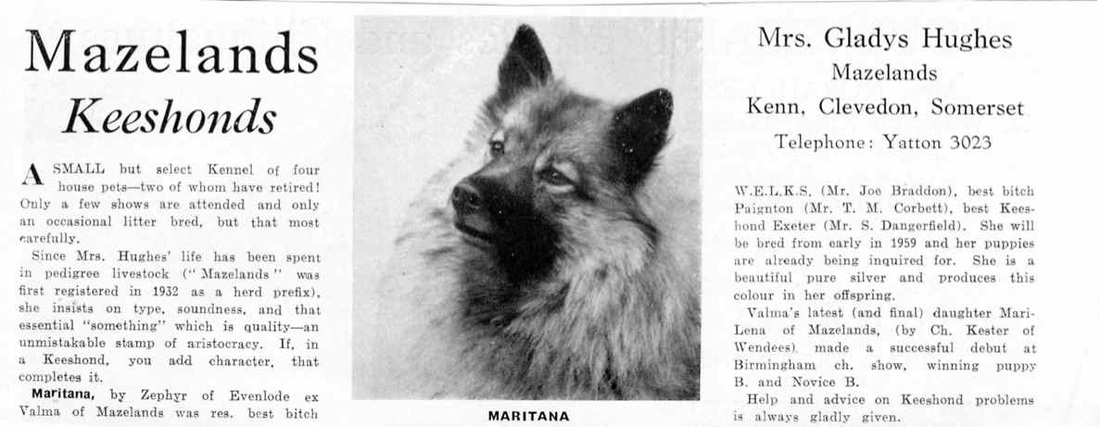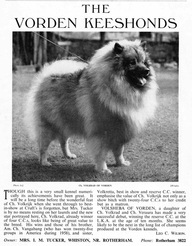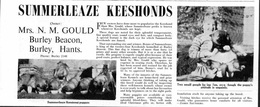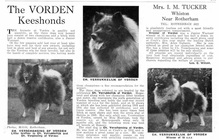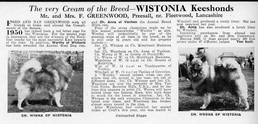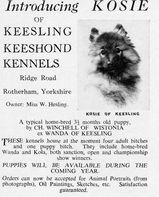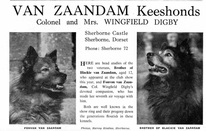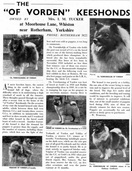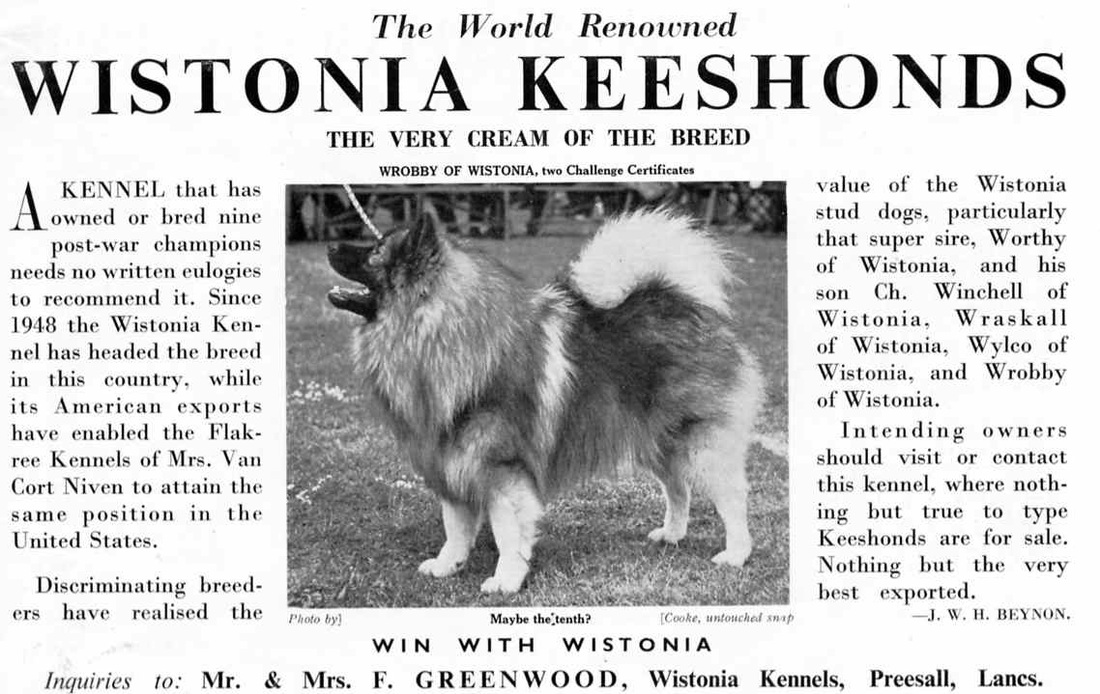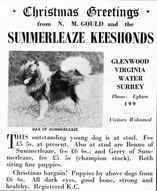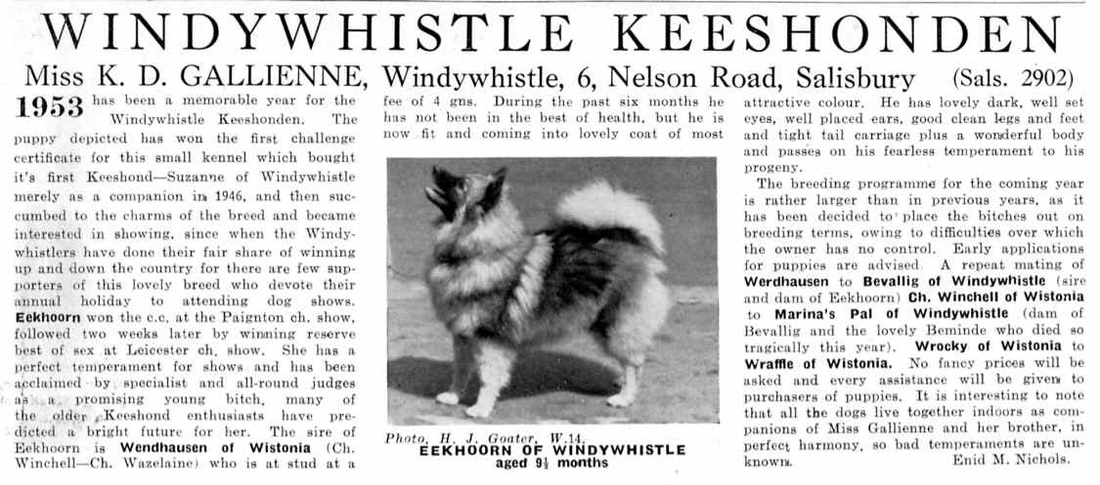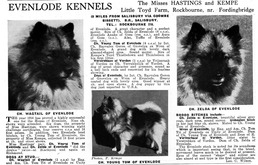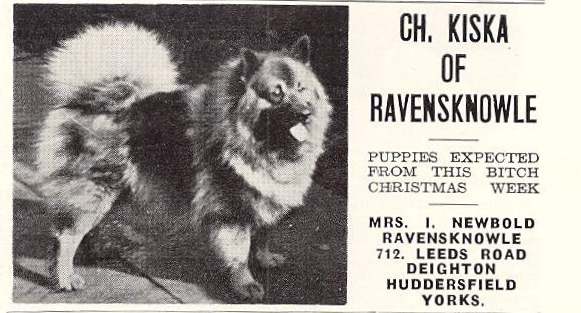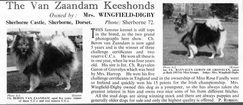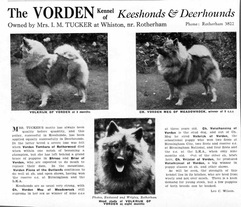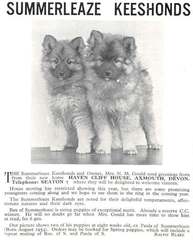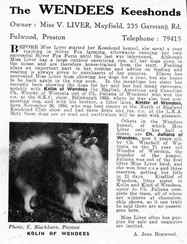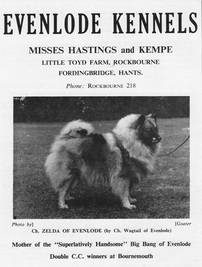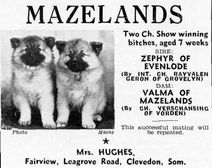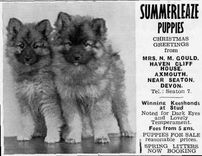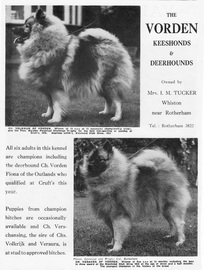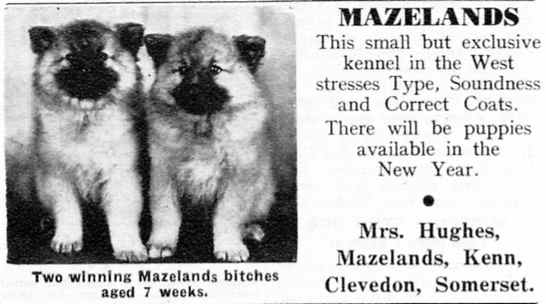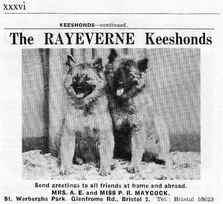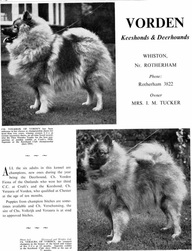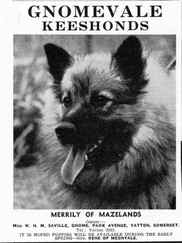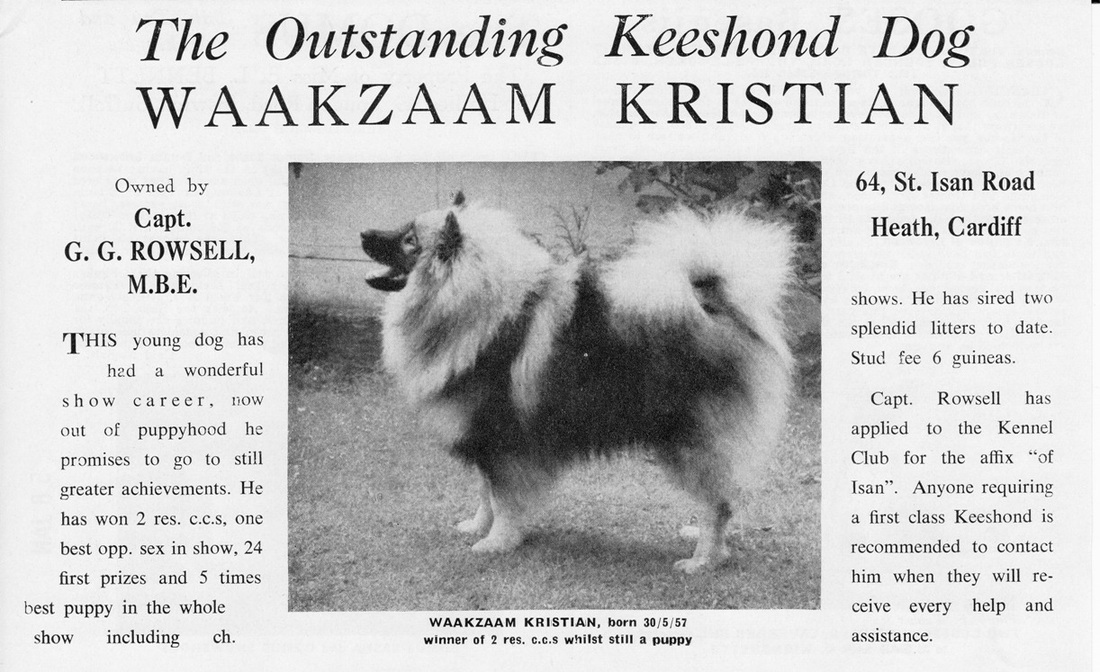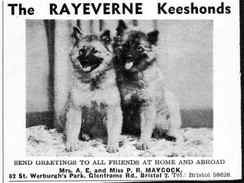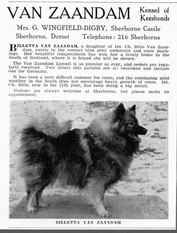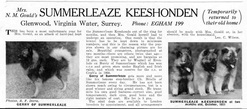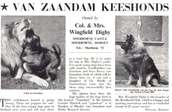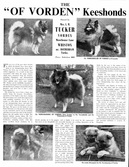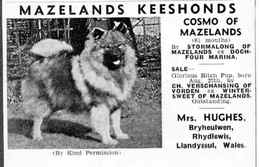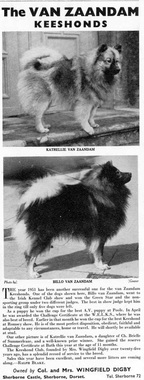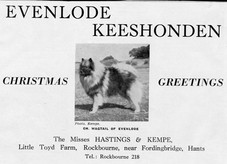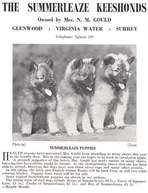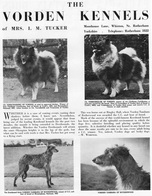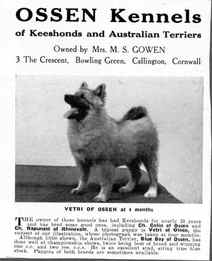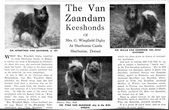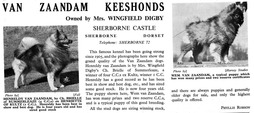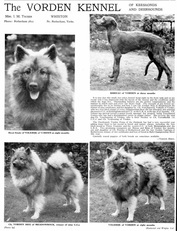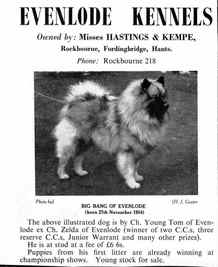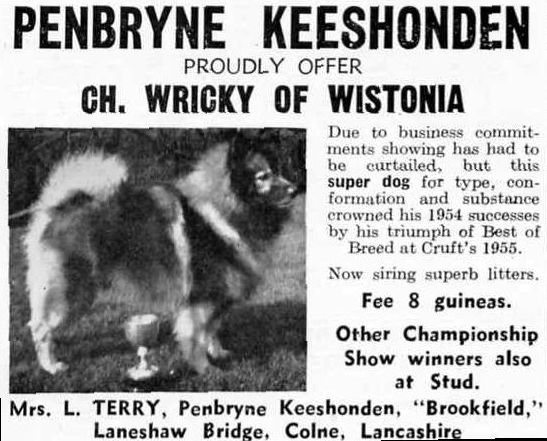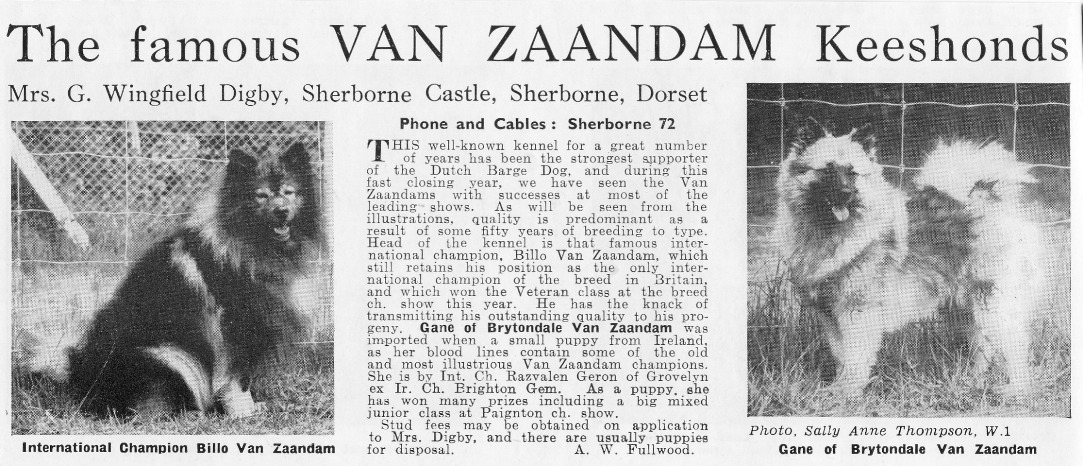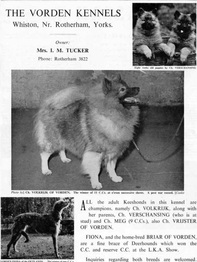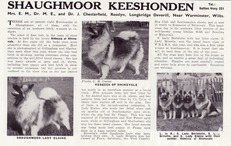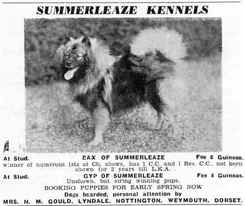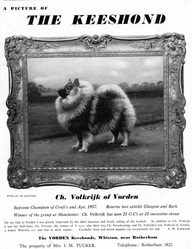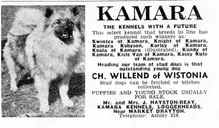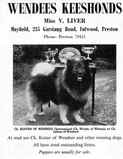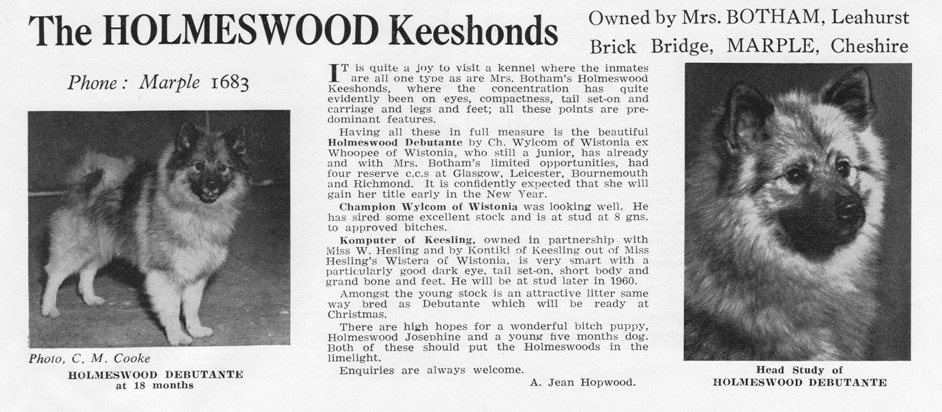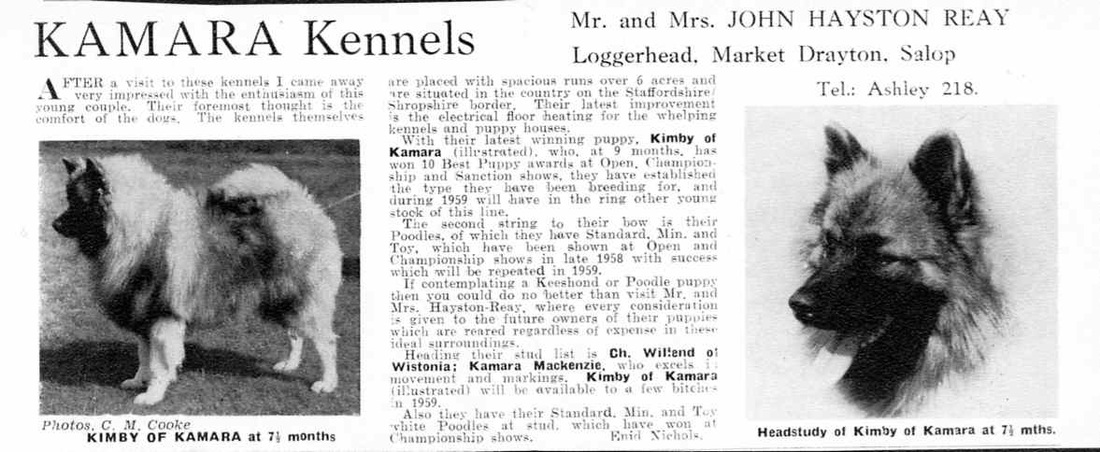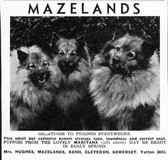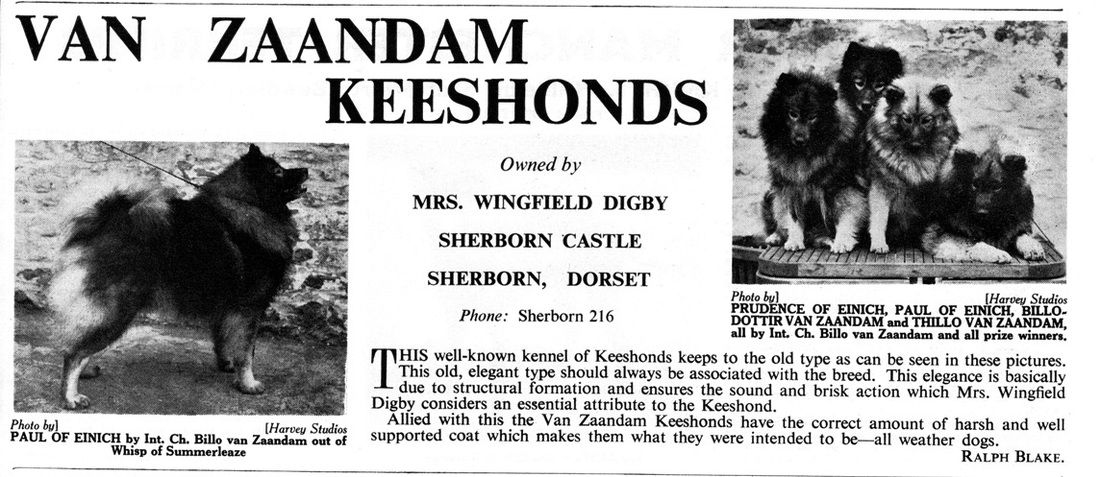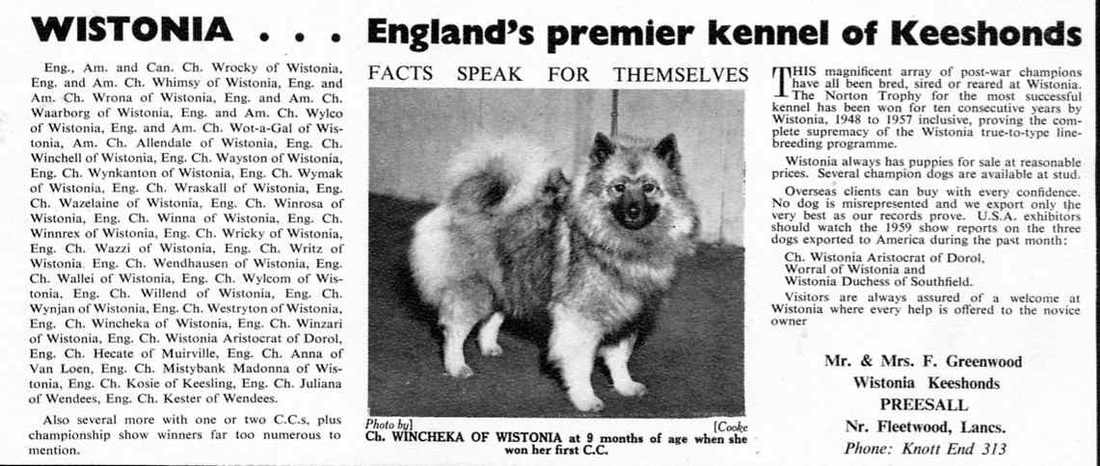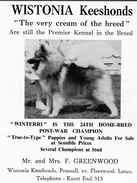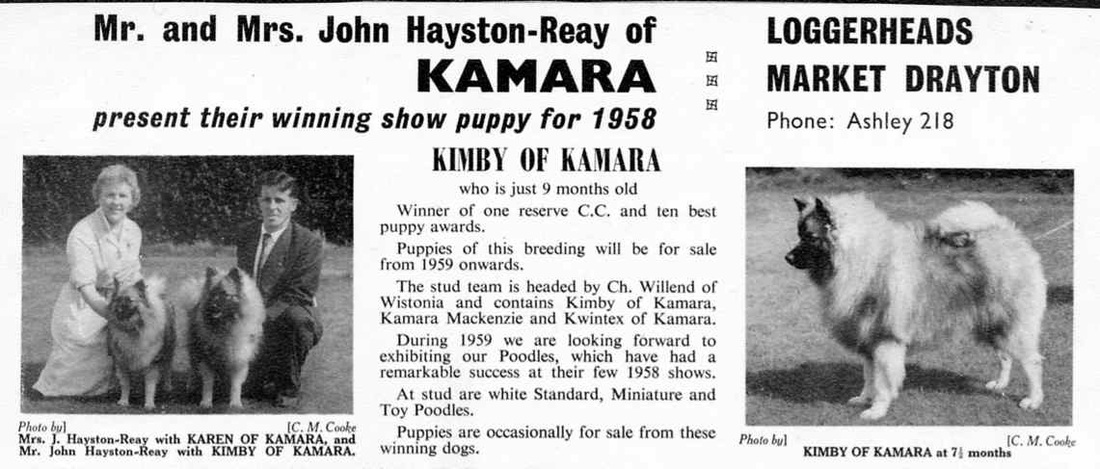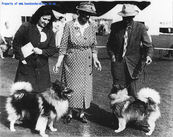Keeshonds of the 1950's
With the arrival of the 1950’s and some economic recovery after the immediate post-war years the interest in breeding and showing began to really take off. In the keeshond breed some new names came to the forefront. Fred Greenwood and his wife Nan had met the breed during the 1940’s and were beginning to form the Wistonia kennel based on Evenlode and Van Zaandam dogs. During the 1950’s they made up thirty champions. It was the Greenwoods who succeeded in producing the solid cream leg (shown clearly in this photo of Ch Winzari and her son Ch. Westryton of Wistonia in 1958, below left) – until then nearly all dogs had dark shading to the knee. This is now rarely seen. (See photo of Billisa van Zaandam, daughter of Int. Ch. Billo van Zaandam at 11 months in 1958 below centre.) Two other champions made up in the 1950’s were Wot a Gal of Wistonia, (below left) and maybe the best-known dog of all time, Wrocky of Wistonia, who has been said to represent the nearest thing to a perfect keeshond ever produced. (see photo below right)
|
In the 1950’s Mollie Collins, who had been breeding under the Van Sandar affix in the United States since the 1930’s, returned to the UK and started breeding under the very successful Ven affix, although she didn’t make great strides until the early 1960’s. Her first champion was Merry Christmas of Ven (below) born in 1959. She was joined by Barbara Glover of Welford, who had previously been with Miss Hastings at Evenlode, and who helped with the Vens as well as breeding on a relatively small scale with her own affix of Welford.
|
|
The Van Zaandams were still going strong, with
the new stud dog Billo van Zaandam (right) producing some very promising offspring, in addition to gaining his
English and Irish championship. Another
notable championship gained was Beron van Zaandam, (below) in 1955. He was
a son of Ch Rayvalen Geron of Grovelyn (below) himself a son of Major of Broadcliffe, the first post-war champion.
|
|
After a very rocky start due to several prospective foundation bitches succumbing to distemper Margo Emerson started her Rhinevale kennel. Her first champion came in 1952 with Rapunzel of Rhinevale (right) daughter of Raphael of Rhinevale and Vesta of Summerleaze.
|
|
This decade was the heyday of the Vorden kennel and Mrs Rene Tucker, culminating in Volkrijk of Vorden winning Best in Show at Crufts in 1957. She was pictured on the front of the Utility Group’s catalogue in 2010, a lovely surprise on arriving at Crufts that year! (right). She was born in 1954, gaining her championship in 1955.
Her sire was Verschansing of Vorden (left), himself another son of Major of Broadcliffe, and her dam Vorden Meg of Meadowrock. (right) Having reached such a climax Mrs Tucker may perhaps have felt she had gone as far as she could and the kennel was disbanded a few years later and she went into breeding Shetland ponies
|
With the breed’s success at Crufts came recognition from a much wider section of the public, and for the first time the breed would occasionally be recognised in the street. It also paved the way for new people to come into the breed and possibly to start their own breeding lines. And so began another stage in the popularity of the keeshond.
|
Mrs. Fry (left) used to spin the Kees wool that was sent to her from across the UK, and post it back to the Keeshond owner for knitting into mittens and woolly hats.
It was also Mrs. Fry who took in the two poor lost dogs whose story is such a testament to the Keeshond character. Andy and Ferdy were placed in kennels during World War II, while their army officer owner was away on service. Their kennel was bombed and they escaped. They made their way from Dover to London on their own, (some 80 miles) evading the many attempts of kind-hearted and concerned people to capture them. They found their former apartment, only to find new people there, so they went on to where close friends had lived. Again, no-one they knew was there. During an air-raid a lady who kept a watch for lost dogs saw them and managed to bring the two terrified dogs into her house. She nursed them back to health, and then set about trying to find somewhere well away from the bombing for them to regain their confidence. Mrs. Fry came forward and she and her husband looked after the two dogs with devotion until their deaths. Mrs. Fry and the lady in London who took the dogs in gradually pieced together their story from a disc round the neck of Andy. Andy and Ferdy had made their mark on a number of people as they made the journey from Dover, and the most remarkable thing of all is that by pure chance, many years later, Mrs. Fry was to meet one of them. A man visiting a Keeshond-owner friend of Mrs. Fry had kept a kennel of greyhounds on the Dover - London road during the war and had managed to catch the dogs, and taken them to the police station, from where they had escaped and continued on their way. He told this story to Mrs. Fry, and she realised that the two dogs could have been none other than Andy and Ferdy. Their original owner never came back, presumably missing in action. With thanks to Gwendolen Wingfield Digby's book "My Life with Keeshonden" |
The photo above shows Mrs Wingfield Digby judging at Bournemouth Show in 1958. On the left is Doreen Le Gallienne with Huzaar of Windywhistle and on the right stands Fred Greenwood with Winzari of Wistonia.
|



